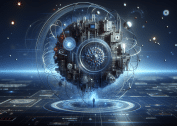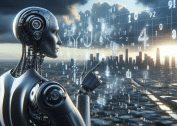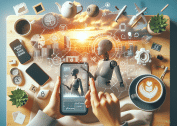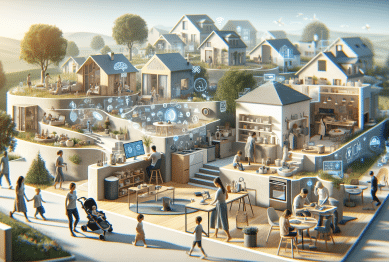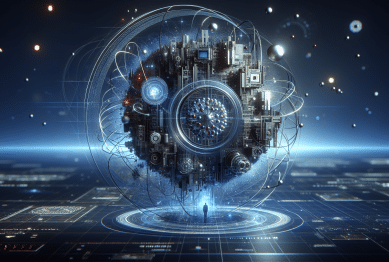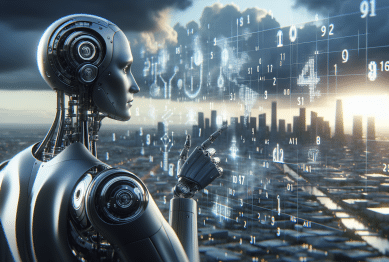From smart factories to your living room, artificial intelligence and robotics are reshaping modern life in unexpected ways. This guide unpacks the practical reality of automation, its impact on daily routines, and what emerging tech could mean for you and society.
Understanding the Robot Revolution in Daily Life
Artificial intelligence and robots are no longer confined to the pages of science fiction. Today, intelligent machines are already at work in places like hospitals, warehouses, and even in the devices you use every day. The seamless integration of machine learning into common tools means your smartphone can now recognize faces and voices with startling accuracy. Machine intelligence often works anonymously behind the scenes, optimizing schedules or guiding logistics, sometimes making life easier without you even noticing. Robotics isn’t restricted to factories; home assistants and delivery bots are becoming part of everyday conversations about convenience and efficiency.
Advanced robotics and automation might sound complicated, but the underlying goal is straightforward: boost efficiency, increase precision, and cut down on repetitive tasks. Hospitals, for example, use robotic systems for delicate surgical procedures where human hands might struggle to maintain the same steady accuracy. At logistics centers, robots zip through aisles, fetching packages round the clock. This evolution is having a ripple effect, sometimes freeing up human workers for more creative or people-focused roles. The convergence of artificial intelligence and robotics continues to redefine what’s possible inside modern workplaces and beyond.
For many people, the idea of robots at work prompts both excitement and unease. There’s a growing curiosity about how these machines make decisions and where the boundaries of human-machine collaboration might lie. Some individuals are surprised to learn that algorithms now help streamline everything from grocery delivery to financial planning. As robots and AI become more commonplace, open conversations about transparency, job design, and human-machine interaction gain even greater importance. Many are asking: How will automation affect not just where but how we work and live?
The Science Behind Automation and Artificial Intelligence
Automation uses carefully crafted algorithms that allow machines to handle tasks with minimal human intervention. While the term may sound futuristic, the principles behind it are decades old. Recent leaps in machine learning and data processing have made automation far more adaptive. For example, neural networks—one of the most recognizable AI technologies—can analyze massive datasets, recognize complex patterns, and continuously update their own strategies based on new information. Such adaptability underpins the rapid spread of machine intelligence.
Modern artificial intelligence depends on three ingredients: data, algorithms, and computational power. Digital sensors gather data at a phenomenal rate, helping robots interpret their surroundings. Predictive models then let machines anticipate what comes next—be it in traffic flow, disease detection, or market trends. This capacity for pattern recognition is revolutionizing prevention and forecasting, often outpacing traditional methods in accuracy and speed. In industries such as transportation and healthcare, these advancements provide new pathways for efficiency and safety.
AI-powered robots are constantly improving. Through a process called deep learning, machines gain the ability to extract meaning from raw information, sometimes surpassing human abilities in specialized areas like image classification or real-time translation. The expanding capabilities of robotics aren’t just confined to technical feats—new prototypes are learning to navigate complex real-world environments, collaborate with one another, and adapt to unexpected challenges. The science driving robotics and AI is also fueling innovation in areas ranging from smart homes to space exploration.
Automation’s Impact on Jobs and Skills
The growing presence of automation is changing what work looks like for many people. Some manual tasks that were once routine are now performed more efficiently by machines, especially in sectors like manufacturing, warehousing, and retail. However, this shift doesn’t mean that humans are being squeezed out; rather, job roles are evolving. Tasks that require empathy, complex problem solving, or creative thinking are still in high demand, as robots often struggle with tasks that rely on social intelligence or cultural sensitivity. The workplace is transforming into an environment where human and machine skills often complement one another.
In response to the rise of automation, some industries are investing more in skills training and professional development. Digital literacy, adaptability, and critical thinking are becoming core requirements. New training programs aim to help workers upskill and reskill, making transitions smoother and opportunities more accessible. Initiatives from technology companies, universities, and workforce agencies encourage continuous learning—making sure that people have the tools they need to thrive alongside robots and AI. With the right support, many are discovering fresh opportunities that didn’t exist just a few years ago.
It’s important to remember that automation’s impact can differ greatly from job to job. While repetitive assembly work is being phased out in some locations, new fields such as data analysis and digital maintenance are opening up. Healthcare professionals, educators, and engineers are seeing AI as a tool that allows them to provide better outcomes and customize their approach. In this evolving landscape, jobs are less about routine tasks and more about adapting, learning, and collaborating—with others and with technology itself.
Robotics in Healthcare, Homes, and Smart Devices
Robotics and artificial intelligence are finding vital applications in healthcare. Surgical robots assist with precision operations, while AI scans images for signs of disease, helping doctors diagnose earlier and more accurately. In rehabilitation, robotic exoskeletons support patient mobility and help people regain lost functions after injury or illness. These innovations are not just about machines taking over but about augmenting human capabilities, driving major improvements in safety and outcomes for patients and providers alike.
At home, smart devices powered by AI are changing daily routines. Voice assistants offer reminders, adjust lighting, manage security, and even help cook dinner. Vacuum robots and smart thermostats have become household staples, reducing the burden of mundane chores. For many, these conveniences represent only the beginning of a more personalized and efficient living environment. AI-enabled devices are learning individual habits and preferences, leading to a new era of customization and comfort.
Wearable technology—fitness trackers, smartwatches, and health monitors—brings AI even closer to you. These devices help people track activity, monitor vital signs, and set healthy goals. Some smart wearables notify users of irregular heart rhythms or remind them to take medication, opening up possibilities for preventative care. This close connection between robotics, AI, and personal health is sparking conversations about privacy, ethics, and future healthcare models. As consumers become more accustomed to intelligent technology, demand for further innovation continues to rise.
Societal Shifts: Opportunities and Concerns
The rise of robotics and artificial intelligence brings both optimism and serious questions. On one hand, automation may drive economic growth, generate new types of employment, and make products and services widely accessible. On the other, concerns persist regarding privacy, data security, and social equity. People are debating how to balance progress with protection, ensuring that technological advances benefit everyone, not just a select few. The shift toward robotics challenges policymakers to rethink regulations, employment policies, and ethics frameworks.
Transparent communication and responsible innovation are essential as automation advances. Conversations about algorithm fairness, data collection, and consent are sparking new guidelines in both government and business. Ethical design is a growing field; professionals are working to ensure that automated systems respect human rights, reduce bias, and enhance trust. Industry groups and advocacy organizations are collaborating on global frameworks that can help align technological progress with core social values. Public awareness and education continue to expand in response to these emerging issues.
Society must also address the potential for unequal access to AI and robotics. Not all populations have the same opportunity to benefit from or safeguard against new technologies. Discussions around digital divides, automation in education, and fairness in healthcare are helping to highlight these gaps. There is a growing movement to democratize not just the benefits, but also the skills and knowledge needed to work with advanced technology. This collaborative approach could lead to greater inclusion and innovation for everyone.
Looking Ahead: The Next Wave of AI and Robotics
The future holds even more compelling possibilities for artificial intelligence and robotics. Smart cities are already incorporating intelligent infrastructure to manage energy, transportation, and public safety. In fields like climate modeling, environmental monitoring, and disaster response, AI-driven systems can analyze massive amounts of information and make faster, more accurate predictions. Researchers are exploring how robots and AI might help tackle complex challenges from aging populations to resource constraints.
Emerging frontiers include collaborative robots—often called cobots—that work directly alongside humans on factory floors and in service roles. These machines are designed to interact safely, learn from observation, and offer real-time support without replacing human workers. In education, intelligent tutoring systems personalize learning experiences for students, helping close achievement gaps. Beyond Earth, scientists are deploying robots on distant planets and undersea missions, expanding human reach even further.
Many experts are optimistic that with careful planning and responsible stewardship, automation and AI can contribute to a more resilient, adaptive society. The key will be thoughtful collaboration between technologists, policymakers, educators, and communities. By prioritizing ethical frameworks and inclusive access, the next wave of automation can help solve big challenges and enrich the lives of all. The story of robotics is, in the end, a story about human ingenuity and adaptation.
References
1. National Institute of Standards and Technology. (n.d.). Robotics. Retrieved from https://www.nist.gov/topics/robotics
2. World Economic Forum. (2023). The Future of Jobs Report. Retrieved from https://www.weforum.org/reports/the-future-of-jobs-report-2023/
3. National Institutes of Health. (2022). AI and Robotics in Healthcare. Retrieved from https://www.nih.gov/news-events/nih-research-matters/ai-robots-medicine
4. Pew Research Center. (2023). Artificial Intelligence and the Future of Humans. Retrieved from https://www.pewresearch.org/internet/2023/06/21/experts-optimistic-about-artificial-intelligence-impact/
5. Brookings Institution. (2022). AI, Automation, and the Economy. Retrieved from https://www.brookings.edu/research/ai-automation-and-the-economy/
6. MIT CSAIL. (n.d.). Robotics Research. Retrieved from https://www.csail.mit.edu/research/robotics



